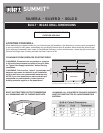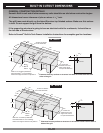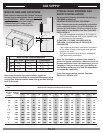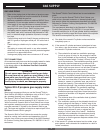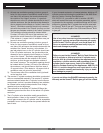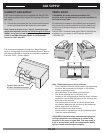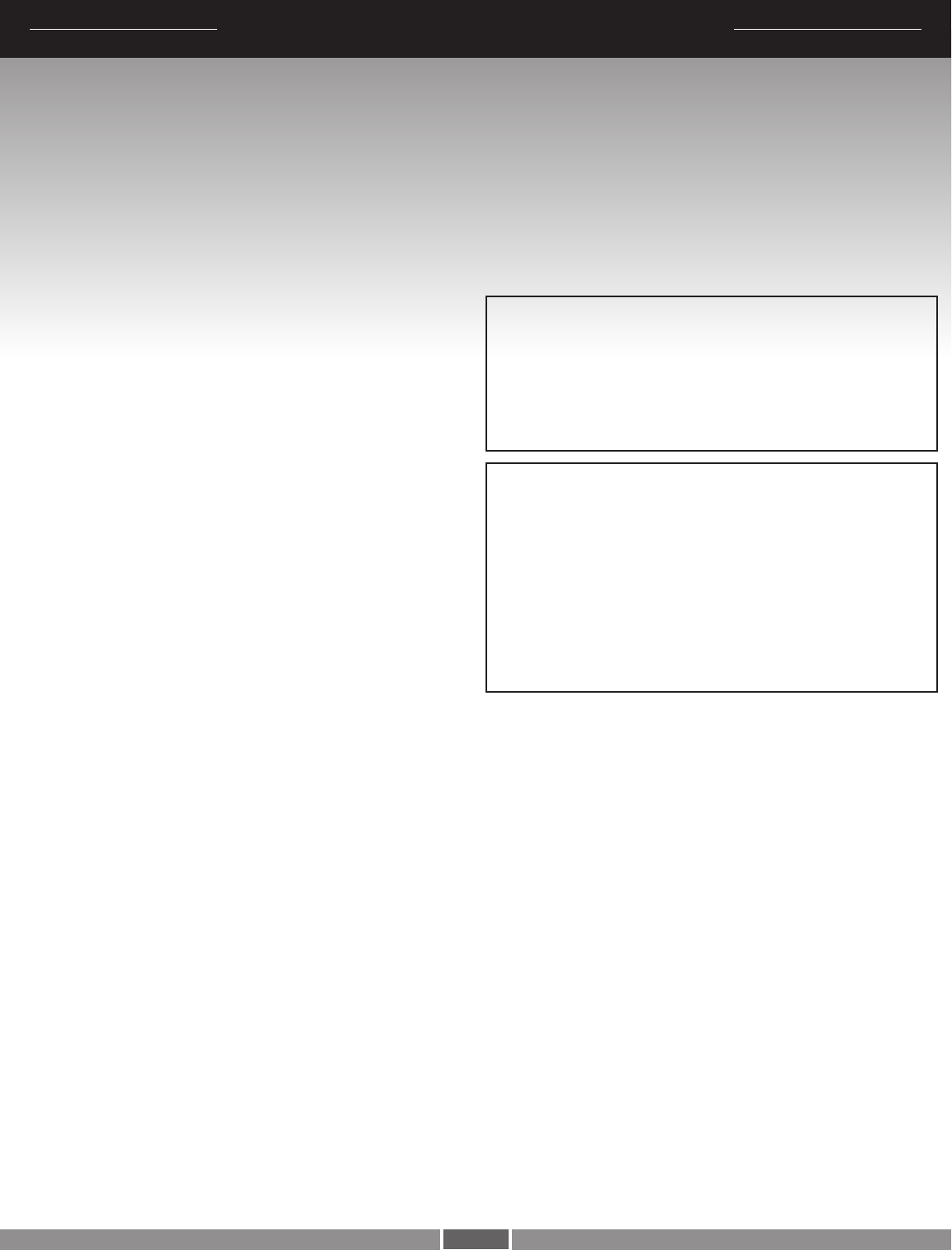
5
1). At least one ventilation opening (a hole or group of
holes, for the purpose of ventilation) needs to be on
one side of the enclosure that communicates with
the outside of the “island” structure. If a gas leak
should occur or the LP cylinder should vent in the LP
cylinder enclosure, the gas should not be allowed to
vent or migrate into the empty or “hollow” area of the
“island”. Ventilation openings should only communi-
cate with the outside of the “island” structure, so that
the gas can dissipate outside of the “island” structure.
The ventilation opening should be located within
5 inches (127mm) of the top of the enclosure, and
should have a total free area of 20 square inches.
(This relates to 1 square inch of ventilation area, per
pound of stored fuel).
2). At least one ventilation opening (a hole or group of
holes, for the purpose of ventilation) needs to be on
one side of the enclosure that communicates with the
outside of the “island” structure, at the bottom. If a
gas leak should occur or the LP cylinder should vent
in the LP cylinder enclosure, the gas should not be
allowed to vent or migrate into the empty or “hollow”
area of the “island”. Ventilation openings should
only communicate with the outside of the “island”
structure, so that the gas can dissipate outside of
the “island” structure. The ventilation opening should
be located within 5 inches (127mm) of the bottom of
the enclosure, and should have a total free area of
10 square inches. (This relates to 1/4 square inch of
ventilation area, per pound of stored fuel).
3). The minimum size of the ventilation hole (s) should
not be less than inch.
d). The remote LP cylinder enclosure should be constructed
with non-combustible materials. The remote LP cylinder
enclosure should isolate the LP cylinder from the burner
compartment, so that it provides shielding from radiation,
be a ame barrier and provide protection from foreign
material such as hot drippings.
e). There should be a minimum of 2 inches (50.8mm) be-
tween the ground and the oor of the remote LP cylinder
enclosure.
f). The LP cylinder valve should be readily accessible for
hand operation. A door on the remote LP cylinder enclo-
sure to gain access to the LP cylinder valve is acceptable,
provided it is non- locking and can be opened without the
use of tools.
If your, licensed contractor or licensed plumber, builds an LP
cylinder enclosure following the guidelines in the ANSI Stan-
dard for Outdoor Cooking Gas Appliances,
Z21.58 CSA 1.6, you need to order kit number (#21287),
which will contain the hose and regulator assembly, mount-
ing bracket for the regulator, connection ttings and LP tank
bracket for retaining the LP cylinder that must be used with
the Summit
®
Built-In gas grill. The hose and regulator in the
kit (#21287) is listed as part of the CSA listed Summit
®
Built-
In gas grill.
DANGER
Use of any other hose and regulator assembly could be
dangerous, and may not provide adequate gas supply
to the Summit
®
Built-In gas grill, and could result in a
re or an explosion causing serious bodily injury or
death and damage to property.
DANGER
Failure to use the the Summit
®
Built-In Tank Cabinet for
a 20 lb cylinder or failure to build a LP cylinder enclo-
sure for a 20 lb cylinder following the requirements for
ventilation, cylinder retention and separation of the LP
cylinder from a heat source, listed in the ANSI Stan-
dard for Outdoor Cooking Gas Appliances, ANSI Z21.58
CSA 1.6, could be dangerous, and could result in a re
or an explosion causing serious bodily injury or death
and damage to property.
If you do not follow the DANGER statements exactly, the
Warranty on the Summit
®
Built-In gas grill will be voided.



